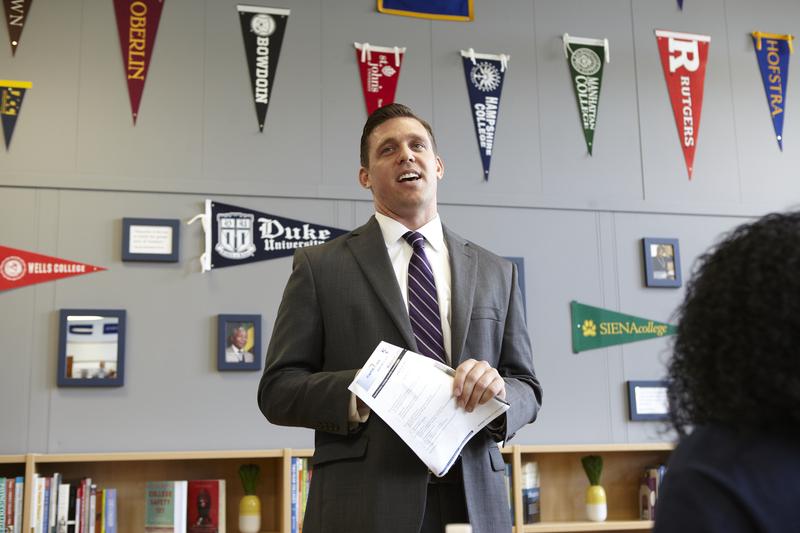Click on the audio player above to hear this interview.
Last year, the Department of Education's Office for Civil Rights found that black students are, on average, three times more likely to be suspended or expelled compared to their white peers.
A number of school districts have tried to cut down on their suspension rate, particularly schools in Mississippi—the Southern state with the largest black-to-white student suspension ratio. Eli Hager, reporter for The Marshall Project, explains that teachers in under-funded Mississippi schools often resort to corporal punishment or "alternative" schools to cope with students who act out.
While some schools are focusing on criminal justice, a handful of schools around the country are turning to a different form of justice to solve their suspension problems: Restorative justice.
Leaders High School in Brooklyn, New York, looked at the data showing which students were being suspended. Rather than sticking police officers in classrooms, the school decided to empower teachers and students to solve disputes through mediation sessions and developing a strong sense of community.
While their restorative justice programs have been developing and evolving over the past three years, they've already seen a nearly 70 percent decrease in disputes and incidents, and zero suspensions so far this year.
David O'Hara is a principal at Leaders High School, which is a New York City Outward Bound School. After years of administering detentions and suspensions as both a teacher and principal, he helped develop the school's restorative justice programs. Felicia Harper, the school's counselor, also joins The Takeaway to discuss the programs.
What you'll learn from this segment:
- How criminal justice tactics are used inside the classroom.
- Why restorative justice practices like mediation have successfully reduced suspension rates.
- How teachers and students view each approach.

